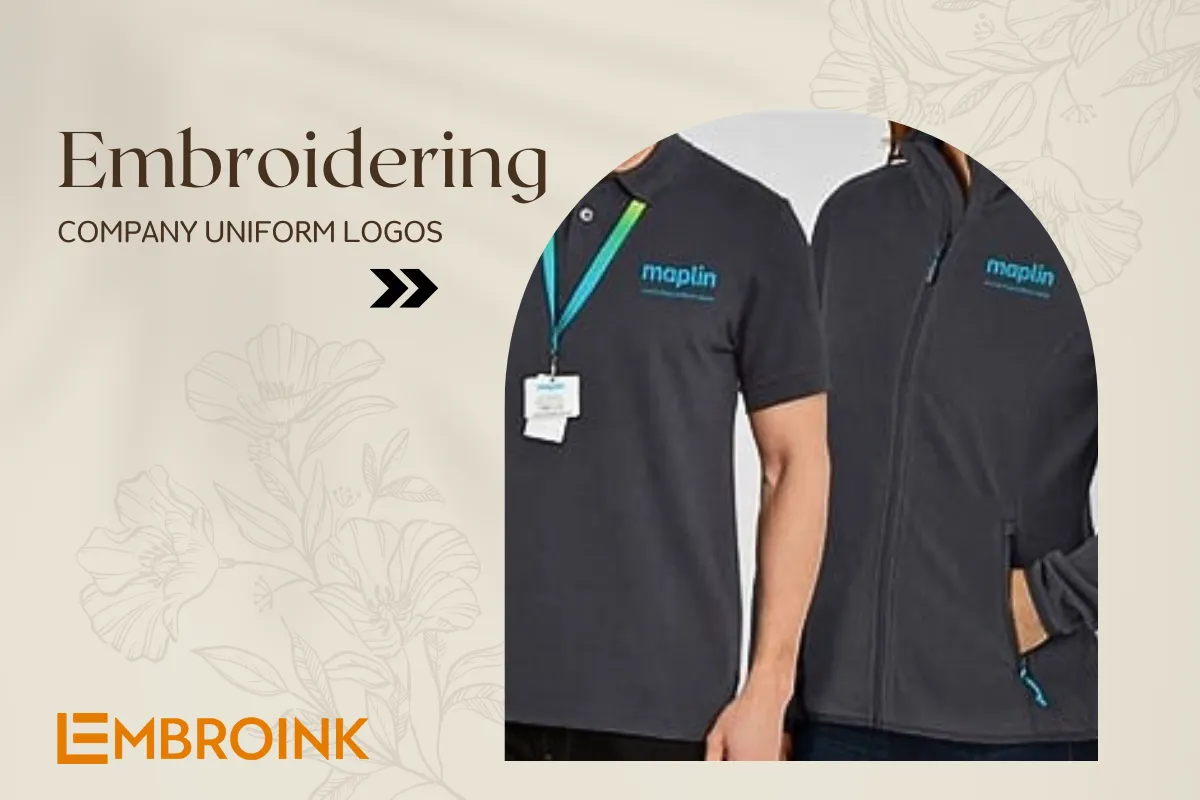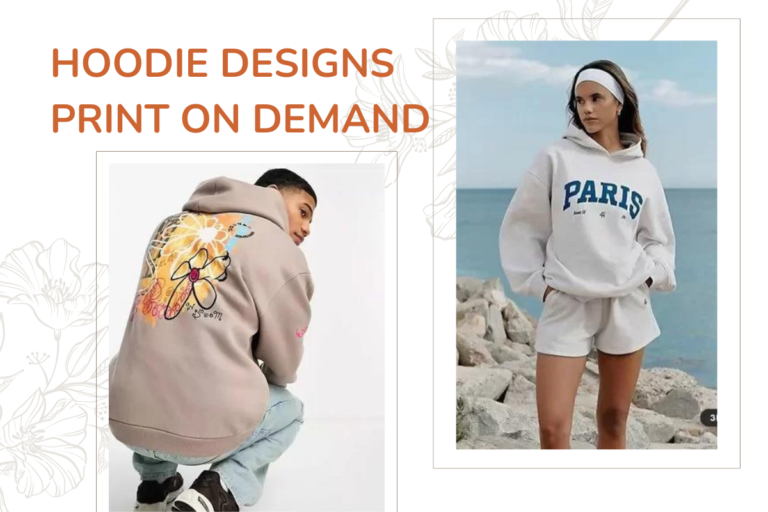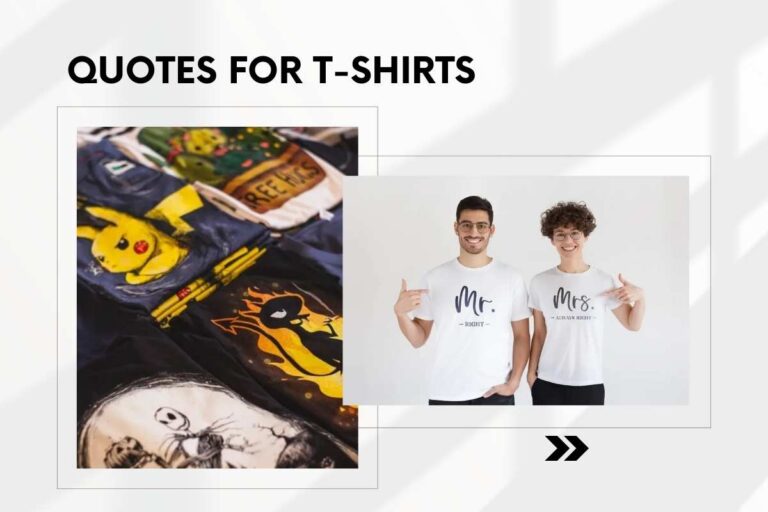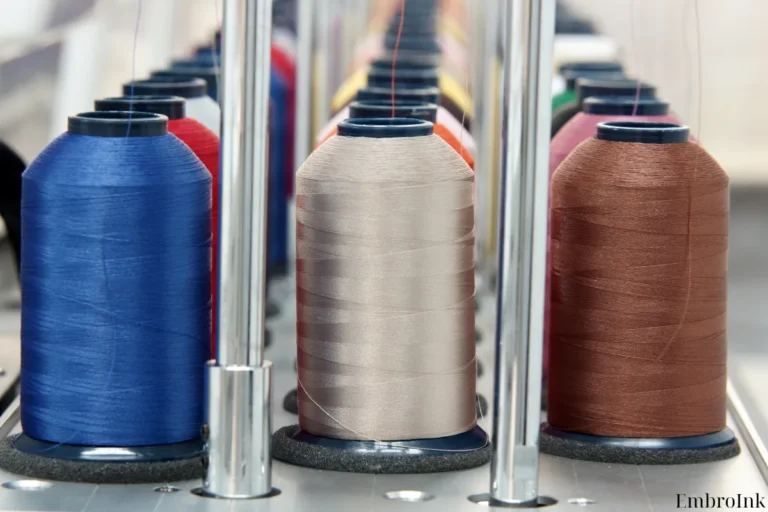5 tips for selecting and embroidering company uniform logos
The company uniform logo not only helps build brand image but also serves as a highlight and the soul of the uniform. The logo needs to be placed correctly, be clear, and be designed to convey the company’s message. Therefore, businesses need to choose a reputable and high-quality logo embroidery service. Here are 5 tips for selecting and embroidering company uniform logos that EmbroInk has compiled for your reference.
5 tips for selecting and embroidering company uniform logos
Determine the uniform fabric material
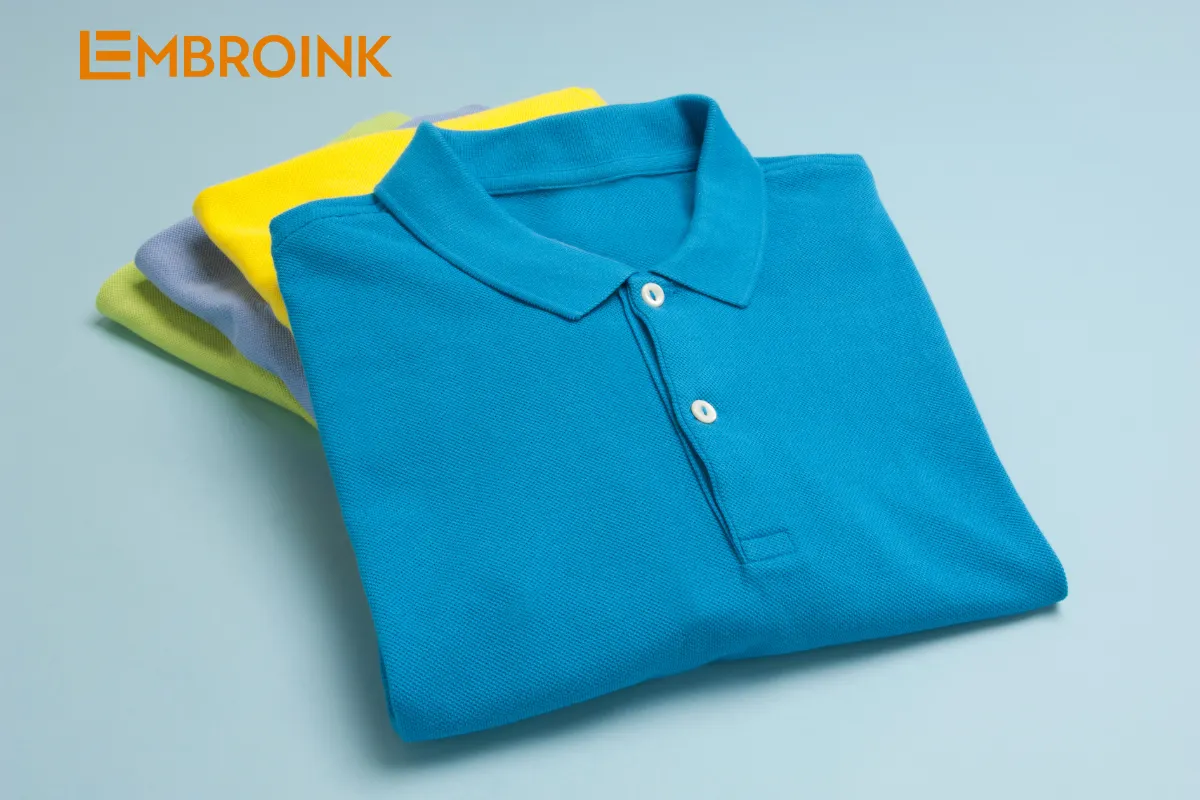
The first thing to do is to determine whether to print or embroidering the company uniform logo. To make this decision, you need to consider the fabric of the uniform that has been ordered from the factory. For fabrics that are thick and have little elasticity, embroidery is a better choice than printing. Due to the thick and less stretchy nature of these fabrics, printed logos are more likely to fade after a period of use.
For fabrics that are thin and highly elastic, printing the logo often yields better results compared to embroidery. Here are some specific reasons:
- Fabric stretchability: Thin, stretchy fabrics are prone to distortion when subjected to force, such as during embroidery. The stitches can cause the fabric to pucker and lose its original shape, affecting its aesthetics.
- Avoiding bulky feel: Embroidery creates thick stitches and threads, which can cause a bulky, uncomfortable feel for the wearer. In contrast, printing the logo directly onto the fabric does not add to the fabric’s thickness, keeping the surface smooth and comfortable.
- Durability of printed logos: Modern printing technologies, such as heat transfer or screen printing, ensure that the printed image adheres well to the fabric and maintains its color over time, even when the fabric stretches significantly. This helps the printed logo retain its beauty longer than an embroidered logo on this type of fabric.
- Aesthetics and detail: Printing allows for the creation of small details, complex colors, and diverse effects that embroidery cannot achieve. This is particularly useful when the logo design includes many details or colors.
By considering these factors, you can make an informed decision on whether to print or embroider your company uniform logo, ensuring the best possible appearance and durability for your uniforms.
Durability of the logo
Printed logos
Potential Issues:
-
- Cracking and Peeling: Over time, printed logos may crack, peel, or fade, especially if the fabric is frequently stretched or subjected to heavy washing.
- Color Fading: Exposure to harsh conditions, such as strong sunlight or abrasive washing, can accelerate the fading of printed logos.
Advantages:
-
- Modern Printing Technologies: Advancements in printing methods, such as heat transfer and screen printing, have significantly improved the durability and longevity of printed logos.
- Flexibility and Comfort: Printed logos do not add thickness to the fabric, maintaining the comfort and flexibility of the garment.
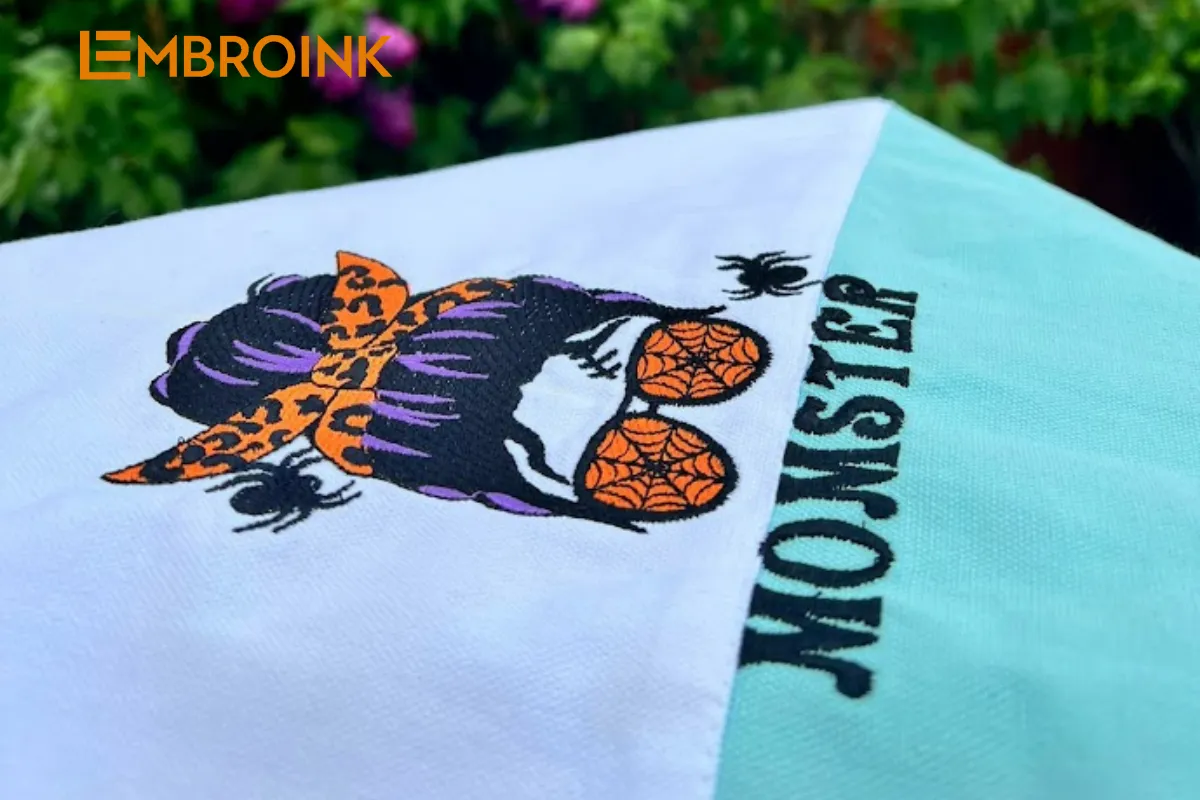
Embroidered logos
Using the embroidery method for company uniform logos typically extends their durability compared to printing. Embroidered logos can maintain their quality for up to a year, and even beyond, with proper care. If well maintained, the embroidered design can remain pristine after a year of use. Therefore, if a business aims to design a company uniform logo that is not only visually appealing but also durable and capable of upholding the brand image without compromising its essence, choosing embroidery for the logo application would be advisable.
Potential Issues:
-
- Fabric Damage: The stitching process can potentially damage thin or stretchy fabrics, causing them to pucker or distort.
- Bulkiness: Embroidery adds thickness to the fabric, which may cause discomfort or a bulky feel.
Advantages:
-
- Durability: Embroidered logos are highly durable and resistant to washing, abrasion, and exposure to various elements. The stitching remains intact and colors stay vibrant for a longer period.
- Professional Appearance: Embroidery provides a high-quality, professional look, which is often perceived as more premium compared to printing.
Considerations for choosing the right method
- Fabric Type: For thick, less elastic fabrics, embroidery is often the best choice due to its durability and professional appearance. For thin, highly elastic fabrics, printing is generally more suitable as it avoids the risk of fabric distortion and maintains comfort.
- Usage and Maintenance: Consider how frequently the uniforms will be washed and the conditions they will be exposed to. Embroidery tends to withstand frequent washing and harsh conditions better than printing.
- Logo Design: Intricate designs with fine details and multiple colors are better suited for printing, as printing can capture small details and complex color gradients more effectively than embroidery.
By weighing these factors, businesses can make an informed decision on the most suitable method for applying their logos to uniforms, ensuring both durability and aesthetic appeal.
Design, color of company uniform logo
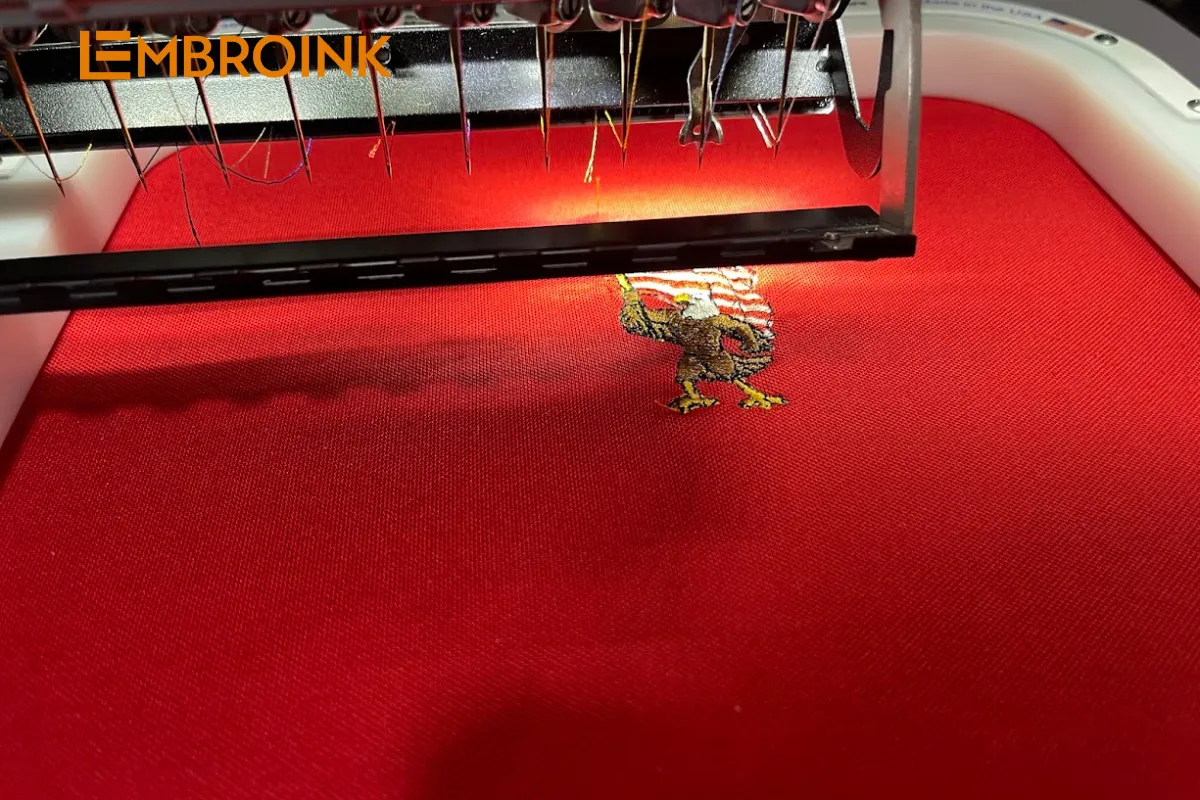
Regarding color
The company uniform logo should be carefully designed with colors that complement and harmonize with the overall tone of the garment. It’s essential that the logo’s colors contrast effectively and stand out prominently against the primary color of the uniform. For instance, if the uniform is in darker shades such as dark blue or black, opting for lighter colors like white, yellow, or cream for the logo would create a striking contrast. Conversely, if the garment is light-colored, choosing darker hues for the logo would ensure visibility and impact.
Additionally, when the logo design incorporates multiple colors, maintaining a balanced use of these colors within the main tone and surrounding color scheme is crucial for achieving a cohesive and visually appealing result. This thoughtful consideration of color ensures that the company uniform logo effectively captures attention and reinforces brand identity with every wear.
Regarding the content and meaning of the logo
Ensuring that the logo embodies a clear theme is essential, as it serves as a visual representation of the company’s message and values to customers. By encapsulating the essence of the brand, the logo becomes a powerful tool for communication and brand recognition. Moreover, the company uniform logo should seamlessly integrate with the business’s nature, products, or services, reinforcing the company’s identity and fostering a sense of unity among employees.
It’s crucial to avoid duplicating ideas from other logos to maintain distinctiveness and prevent confusion among customers. By creating a unique and memorable logo that resonates with the company’s ethos, businesses can effectively strengthen their brand presence and cultivate lasting connections with their target audience.
Complexity and Size of the Logo
The complexity and size of the logo will determine the location and method by which the logo is placed on the uniform (such as embroidering on the left chest or back of the shirt). Companies with multi-colored company logo designs, complex designs, or large sizes should choose printing to save costs and avoid fabric wrinkling. If a company chooses to embroider a large-sized logo, it may cause the garment to become rough, heavy, and uncomfortable to wear.
Similarly, with logos containing many small, intricate details, embroidery may cause the fabric to wrinkle and pucker, making it difficult to maintain the best quality in terms of color and image. Logos with small sizes, fewer colors, or requiring subtle shading changes can opt for both printing or embroidery methods.

3 common positions for company uniform logo placement
There are numerous positions where the company logo can be printed or embroidered on the uniform, such as the chest, sleeve, pocket, or back. However, the three most common positions that businesses often choose for logo placement are the left chest, back, and sleeve. Below is a comparison table highlighting the differences among these three positions.
| Position | Advantages | Disadvantages |
|---|---|---|
| Left Chest | – Provides a professional and traditional appearance. | – Limited space for larger logos or designs. |
| – Allows for easy visibility and recognition. | – May not stand out as prominently compared to other areas. | |
| – Ideal for representing brand identity. | – Logo placement may vary depending on personal preference. | |
| Back | – Offers a larger space for showcasing logos or designs. | – Less traditional than left chest placement. |
| – Can make a bold statement and draw attention. | – May obstruct visibility if wearing a jacket or backpack. | |
| – Suitable for displaying detailed or intricate designs. | – May be less visible when sitting or in certain positions. | |
| Sleeve | – Provides a modern and dynamic look. | – Limited space for larger logos or designs. |
| – Offers additional branding opportunities. | – Can restrict movement depending on logo size and placement. | |
| – Less common, making the logo stand out. | – May not be as visible from certain angles or positions. |
Overall, the choice of logo placement depends on factors such as brand identity, design preferences, and practical considerations. Each position offers its own set of advantages and disadvantages, so businesses should carefully evaluate their options before making a decision.
When deciding where to place the company logo on uniforms, businesses commonly opt for the left chest, back, or sleeve. Each position has its own set of advantages and disadvantages. The left chest position offers a professional appearance and easy recognition but may have limited space for larger designs. Placing the logo on the back provides a larger canvas for bold statements but could obstruct visibility and appear less traditional. If you need further advice or have a need to order custom-made products with embroidering logos, feel free to reach out to EmbronInk for expert assistance.

